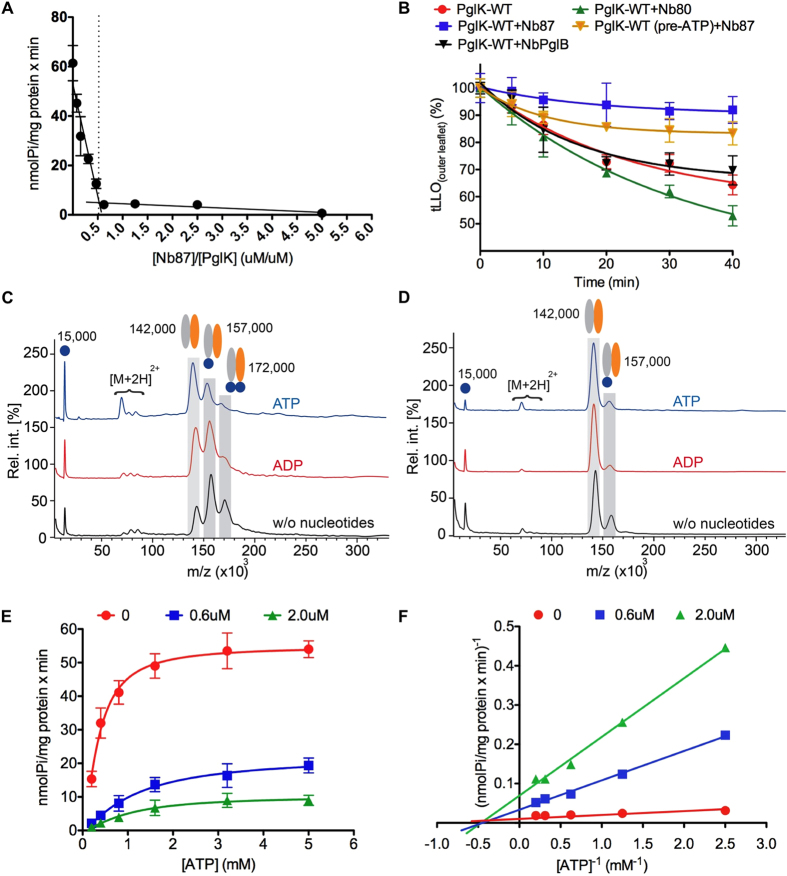Figure 3.
(A) ATPase activity of PglK in detergent (LMNG) in the presence of 0.08 to 5.0 molar equivalents of Nb87. The PglK concentration was kept constant at 1.6 μM, around two orders of magnitude above the expected Kd of nanobody binding8 (B) tLLO flipping in PglK-containing proteoliposomes in the presence of Nb87, a PglK-binding but non-inhibitory nanobody (Nb80), or a non-binding nanobody (NbPglB). “Pre-ATP” indicates a pre-incubation of PglK with ATP before the addition of Nb87. (C and D) High-mass MALDI mass spectra of cross-linked PglK–Nb complexes. Complex formation with Nb87 (C) or NbPglB (D) was investigated in the absence and presence of nucleotides. Unbound Nb ions were found around 15,000 m/z. Homo-dimeric PglK ions were detected around 142,000 m/z. Complex ions bound to one and two Nbs were found at 157,000 m/z and 172,000 m/z, respectively. [M+2 H]2+ corresponds to doubly charged complex ions. (E) ATPase activity of PglK as a function of ATP concentration in the presence of three different concentrations of Nb87. (F) Lineweaver-Burk plot to estimate the inhibitory modality of Nb87. All measurements were performed using a 1:2 PglK:Nb molar ratio in the presence of 5 mM nucleotides except for those showed in (A and E) Error bars denote s.d. (n = 3).

